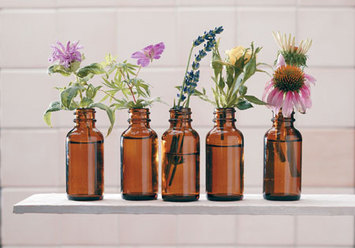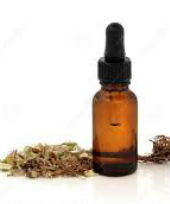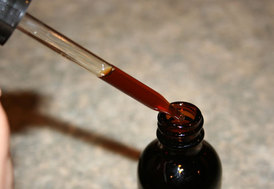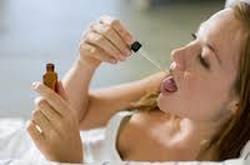How to Take a Tincture

Step 1: Shake the bottle

The first step to taking a tincture is to shake the bottle. This is important so that all of the constituents are evenly distributed.
It is quite common for sediment to form at the bottom of a tincture. While sediment can always be poured off, sometimes it is an important part of the medicine. Some common examples include Milky Oatseed and roots such as Dandelion, Echinacea and Burdock - tinctures of these herbs will have a thick layer of sediment which are just as medicinal as the clear portion of the tincture. Medicinal sediments should not be gritty, but should mix well with the tincture. Even if there is no visible sediment, it only takes a short moment to shake the bottle and ensure consistent dosage.
Step 2: Decipher the Dosage

First off - what is a dropperful? This term can be quite misleading, as the glass pipette - or, "dropper" - does not actually become full. When an herbalist says "dropperful," she or he means the amount of liquid that is suctioned into the pipette when you squeeze and release the rubber top once. It will normally fill the pipette about 1/3 to 1/2 full, as in the image above. Some prefer to call this unit a "squeeze" or a "squirt."
Not every dropperful is going to be the same - it varies depending on how hard you squeeze the dropper, how full the bottle is, the barometric pressure, what you had for lunch, etc. It is for this reason that dosages is sometimes given in drops, such as: 30-60 drops 2-3 times a day. Most people are not going to count out 60 drops twice a day, but if you want to be sure you are getting the right dose, you can count out the drops once to get an idea. If there are 28 drops in the dropperful you count, and the suggested dosage is 30-60 drops, then 2 dropperfuls will be sufficient. If there are only 20 drops then you might want to use 3 dropperfuls. My suggestion is to follow the dosage guidelines to the best of your ability, and allow for some variation in the dynamic dropperful.
Remember - a dropperful is one squeeze and release of the dropper top, and contains roughly 30 drops or 1 ml. There are about 5 ml in a teaspoon.
Step 3: Ingesting the Tincture

Sometimes, a bitter taste is an important part of the medicine- tasting something bitter stimulates bile production and improves digestion. In this case, you may want to either take the tincture directly, or, as I prefer, take it in a little water. When I say a little water, I mean 2-4 ounces, or a big gulp. Enough water to sufficiently dilute the tincture and buffer the taste, and not so much that you have to drink a whole glass of slightly unpleasant tasting water to get the dose! You can also take your tinctures in a little juice, which will mask the flavor of the tincture better than water.
So there you go, it's as simple as shake, squeeze, and swallow!
Frequently Asked Questions
A tincture is an alcohol extraction of an herb - the alcohol extracts the medicinal constituents of the herb through the process of osmosis, resulting in a concentrated medicinal liquid. Sometimes vinegar or glycerine are used to make an extraction, which can be taken in a similar manner as a tincture.
Q. Tinctures are new to me and it is a little uncomfortable, is it safe?
A. Tinctures are generally safe - just make sure you are getting them from a person or company that you trust. Here is some basic information you will want: The name of the herb (scientific name as well is best), the ratio of herb to liquid, the date produced or an expiration date, the percentage of alcohol used, and any other ingredients. A tincture is a very common way to take herbs, and in and of itself is no more dangerous than any other way of taking herbs as long as you follow the recommended dosage. That being said, anyone can have a sensitivity or adverse reaction to any substance, so you always want to be aware when ingesting new herbs that you haven't taken before. You also want to know in advance that the herbs you are taking do not interfere with any medications you may be on.
Q. I am concerned about myself or my child ingesting alcohol
A. The amount of alcohol one ingests when taking even a relatively large dose (such as a tsp) of tincture is quite small - a fraction of a standard drink. For example - most tinctures are between 30 and 90% alcohol and dosed between 2 and 5 mls. A standard "shot" of 80 proof liquor is 1.5 ounces, or 45 mls (20 mls of pure alcohol). One would give a reduced dose to children in relation to body weight, as well. However, if you wish to avoid alcohol completely, there are many other ways to ingest herbs. A common substitute for a tincture is a glycerite, which is similar to a tincture but made with vegetable glycerine. Vegetable glycerine tastes sweet, so it is great for children.
Herbs can be taken in a multitude of ways: as tea, a syrup, a powder, in capsules, and eaten fresh! Tinctures are certainly not the only way to take herbs.
Q. How long to tinctures last?
A. Tinctures have a very long shelf life - years! After 10 years, I might get some new tinctures as some of the constituents may have started to degrade at that point ;).
Q. How do I store tinctures?
A. Keep tinctures at room temperature and out of direct sunlight.
If you have any other questions, please ask them in the comments section below.
Thank you for reading!
Elise

 RSS Feed
RSS Feed
